We’re anglers. We focus on our next big fish, or our next session at the tying vice, or our next trip to Alaska or Montana or the Florida Keys. We swap stories, and we share photos, and we fixate on the big one that got away.
What many of us never think about, though—in fact, what many of us seem to ignore—is the danger that hangs over our angling like the Sword of Damocles. We are facing an existential threat unlike any we’ve seen before; a crisis that will impact all of us, whether we target bonefish in Belize, steelhead in British Columbia, smallmouth bass in Arkansas or brook trout in North Carolina.
To make matters worse, it’s the type of problem we could fix with a “can-do” attitude, a little elbow grease, and the kind of innovation and leadership that, in bygone days, used to be synonymous with the United States of America. Hell, we used to be incredible problem-solvers. Now, though, we sit quietly in the back of the bus while the usual suspects—our politicians, along with the fossil fuel industry and its lobbyists and enablers—drive us straight towards the cliff.
I’m talking, of course, about the climate crisis. Human-caused climate change.
Thirty years ago, global warming seemed largely theoretical. Sure, scientists were clear about what was coming down the pipe, but we weren’t seeing it first hand. The impacts were still distant, and vague, and obscured by the “noise” inherent in the day-to-day weather.
Now, though, those impacts are as clear as the nose on your face, or the fury of a storm crashing ashore and depositing a once in a thousand years rain event on North Carolina, or the aching sadness of a California town incinerated in the blink of an eye, or the despair generated by the unprecedented and relentless flooding that’s been submerging the Midwest.
We’re long past the point where climate change is theoretical or where anyone with an ounce of credibility can claim that the climate chaos we’re experiencing doesn’t have human fingerprints all over it. If you, personally, are not aware that we are impacting the climate by injecting 40 billion tons of CO2 into the atmosphere each and every year, it’s likely because you’re not interested, or because you’ve chosen to walk a path of willful ignorance, or because your partisan politics are more important to you than sharing a livable world with your children and your grandchildren.
There’s something else you need to know. If you’re not part of the solution, then you are part of the problem.
So what, exactly, is that problem? What does the climate crisis look like when we get up close and personal?
Climate change—or global warming, if you prefer—has lots of faces. It looks just like dead hogs and chickens floating in a vast stew of fetid North Carolina flood water. It looks like a dying forest on the edge of Yellowstone National Park, or melting glaciers in Glacier National Park, or the decomposing fish littering a Florida beach, or rain like you’ve never seen thundering down from a Virginia cloudburst. It looks like wildfires leaping a California freeway, and the skeletal bones of a bleached-white coral reef, and a farmer staring up at yet another downpour and mouthing the words, “Lord, please help us.” It looks like trout dying in the Yellowstone, and salmon floating belly-up in the Columbia, and kids playing video games because it’s too hot and smoky, or too hot and humid, or just too damn hot to go outside and fish on a summer day.
It sounds hopeless, doesn’t it? The problem is simply too big. It’s too far-reaching. It’s too pervasive. And if you listen to the peanut gallery, you’ll hear all sorts of excuses why we can’t get our act together and fix this. In fact, we’ve heard it all before. It’s too hard. It’s too expensive. The Chinese aren’t going to do anything, so why should we? In other words, let’s ignore the threat and pretend it doesn’t exist and condemn our children and grandchildren to a world where the landscapes and waters are degraded beyond recognition.
I’m sorry, but what a load of crap. We’re Americans. We can do what we want. We can fix the problems we’ve caused. We can turn away from the dirty fossil fuels that are causing global warming and transition to cleaner, cheaper forms of renewable energy. We can work out technological solutions so our electrical grid can store surplus power from wind and solar. We can invest in healthy green buildings that cut our energy use at the same time they save us money, enhance our health, and protect our environment. We can rebuild our infrastructure and lock in America as the global leader of the world-wide clean energy economy. We can do all these things and if someone looks you in the eye and tells you we can’t, then you should know that they’re either lying to you or they’re deeply, disturbingly confused or unpatriotic.
It’s time for us to step up and fix this massive problem; a problem, I should add, that we are all responsible for. It’s time for us to save our fishing, and our economy, and our landscapes and waters. It’s time to give future generations the same opportunities and blessings that we were afforded, and to vote for congressmen and senators who will show leadership by addressing climate change. We also need to ignore the naysayers and start believing in America again.
So how do we get started? First, we have to stop sticking our heads in the sand and start talking about the climate crisis. Discuss what’s happening with your friends and your neighbors, your colleagues and your fishing partners, and especially with your family. We’ll never accomplish anything if we don’t begin talking about the crisis, and about our responsibility to our kids and our grandkids. Then call your senators and representative and tell them them that you’re a constituent, and that you’re a sportsman, and that it’s time for them to act on climate.
Are there other things you can do? Sure. You can commit to learning more about the climate crisis. You can buy an electric car, or plant a tree (or twenty), or eat more local food, or use more public transportation, or upgrade to more energy efficient appliances, or put solar panels on your roof, or ride your bike on a more regular basis, or support brands and companies that are committed to addressing climate change, or install better windows and more insulation in your home, or write letters to the editor of your local paper, or ask the conservation orgs you support to get more involved in the fight. All those things, and a million more, can help. But right now—today—call your senators and representative and tell them to get off their asses and start working on climate change. (Visit CallMyCongress.com for their phone numbers.) Then please start talking to your family and your friends about the single biggest threat to angling in America. As our scientists keep warning us, we don’t have much time left.




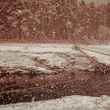
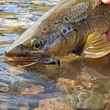








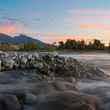
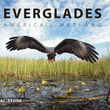



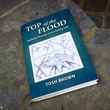
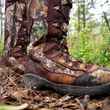




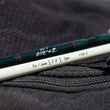



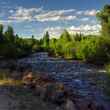
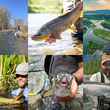
Comments
Tony replied on Permalink
Join trout unlimited. In Minnesota we have restored over 80 miles of trout streams and buffered them with hundreds of acres of prairie. You can do it too...
Pages